The nuances of caring for grapes in spring
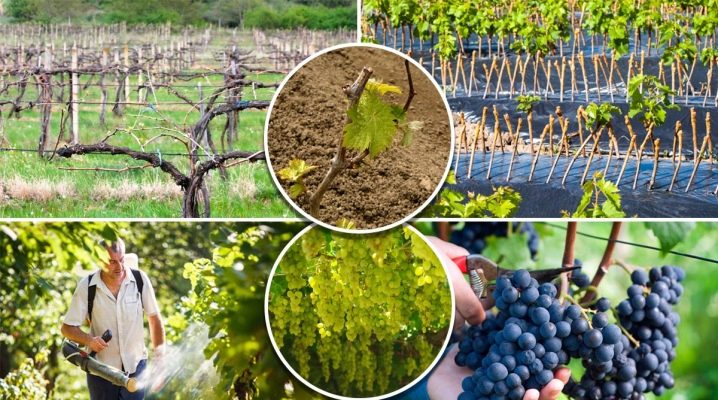
Grapes are a rather demanding crop, so it won't be easy to care for. Spring care is especially important, it is during this period that the gardener has to carry out the largest number of procedures. It is worth carefully reading all the stages of grape care in spring.
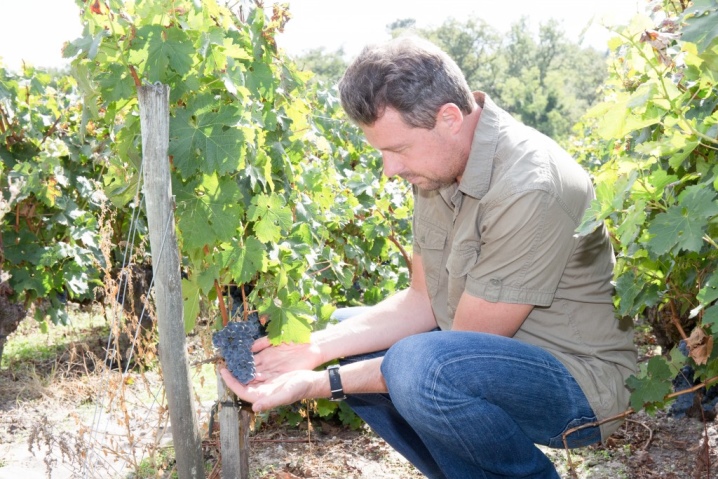
How do I shoot a cover?
The grapes do not belong to particularly winter-hardy crops, therefore, they need a mandatory shelter for the cold period. After winter, it must be removed correctly. This should be done only after the snow melts, and the temperature parameters of the air are +5 degrees. The procedure is carried out gradually, preparation in this case is very important. First, you just need to raise the shelter so that fresh air goes inside. This will obstruct cultural debate.
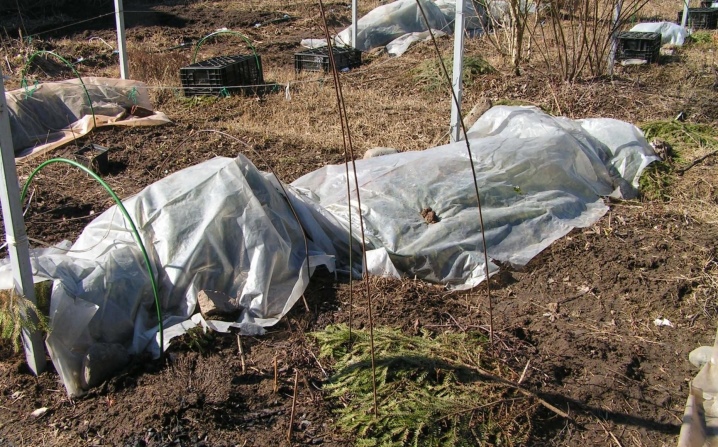
It is recommended to ventilate in a metered dose - no more than three hours a day. Then, when the air warms up to +10 degrees, the covering material can be completely removed, and they do it carefully, trying not to break the vines that are weak after wintering. The terms of withdrawal completely depend on the territory in which the gardener lives.
If the climate is warm, then the grapes can be released in early April. In cold regions, the dates are shifted towards the end of the month.

Having removed the shelter, it is necessary to immediately assess the condition of the grapes. The first step is to examine the eyes. A healthy eye is green in section, and a frozen one is brown. The situation is not fatal, just in this case the grapes will grow later. Next, they examine the vine itself. If it is black or brown in the cut, it means that such an shoot must be cut out to the very base, and then spud. The last step is root evaluation. If they did not survive the winter well, then the grapes will begin to dry quickly. To save the plant, some of the vines will have to be removed in order to reduce the load on the crop.
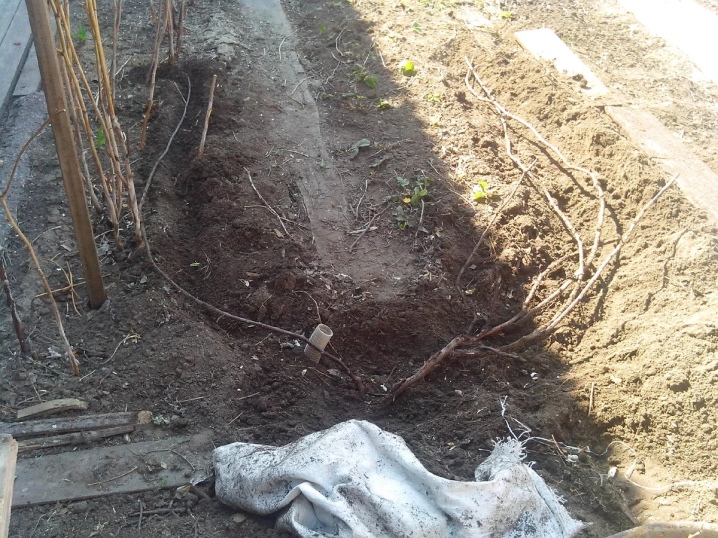
Shaping and garter
Pruning grapes is practically the first thing that needs to be done after winter. The procedure is simple, even beginners can handle it. You will have to do sanitary pruning first. After removing the shelter and assessing the state of the culture, its type is determined.
- If the annual shoots are completely frozen and the buds have died, all dead parts must be removed. Use the vines at the bottom for layering, and cut those at the top to two internodes.
- If the shoots are moderately damaged, then you need to select those from which the top is frozen, and then remove them. If you ignore this procedure, you will end up with a large number of unnecessary stepchildren.
- In the case of little or no damage to the shoots, pruning can be omitted, since the grapes will grow well anyway.

After the sanitary one, shaping pruning is carried out. It is imperative to form a bush, otherwise it will thicken and yield less harvest. If we talk about the classic form, then the haircut is carried out as follows.
- First year pruning depends on the number of shoots. If it is one, it should be cut by 4 eyes, and if two, then, respectively, by 2. The purpose of such a haircut is to get "sleeves". This is how developed grape stems are called in horticulture. After the procedure, there should be 4 or more of them.
- In the second year, you don't really need to do anything. Only new shoots are to be trimmed, making them shorter by two eyes.
- In the third year, you will have to pay attention to the sleeves themselves. Each of them must have two vines. They need to be cut for a certain number of buds, usually from 7 to 15, while 4 buds are left on the branches, and about 12 on the arrows. During the pruning of the third year, a replacement knot is also made (the shoot closest to the roots). It needs to be cut into two buds.

It is worth remembering that pruning is carried out with a sharp and disinfected tool, and the wounds will need to be covered with garden pitch.
Having finished pruning, you need to proceed to the next event - the garter of the grapes. Without it, it will not be possible to protect the plant from the fungus, since the vine will creep along the ground. The garter should be carried out in the absence of rain. The first stage is carried out immediately after the disclosure of the culture. Shoots are allowed on the trellis, and the fruit should be placed below. The second stage will take place in early May. Here you will need to tie up the youngest shoots.
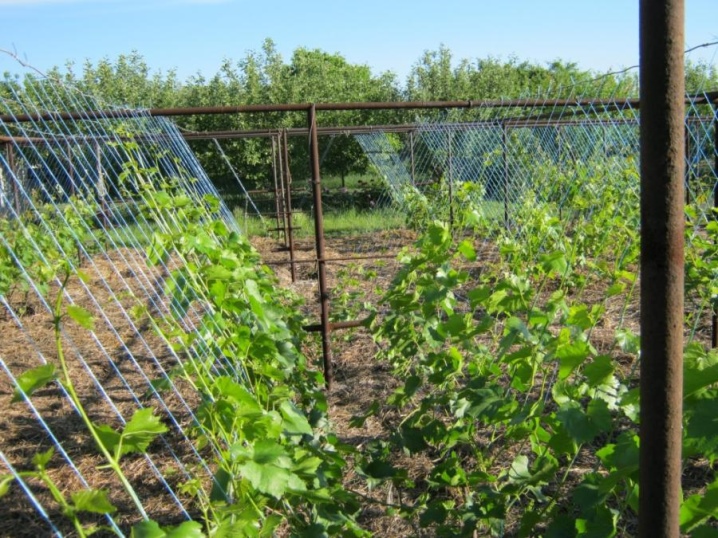
A garter can look different. The most common types are:
- on a wire trellis (the simplest option, described above);
- fan-shaped (suitable if the bushes grow with medium vigor, suggests the presence of a "sleeve" in each branch with fruits, looks like a fan);
- horizontal cordon (this is an option for plants with large berries, when shortened "sleeves" are placed on long cordons);
- vertical cordon (arched formation).
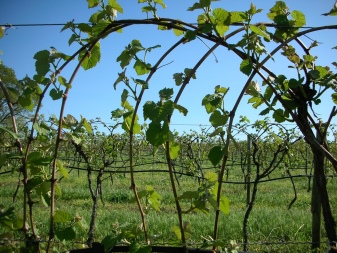
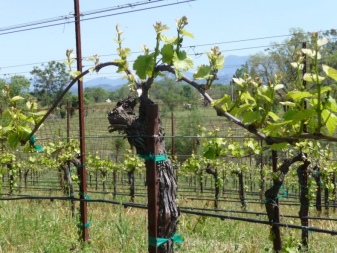
How to care for the soil?
Taking care of homemade grapes in spring is by no means limited to caring for the vine itself. It is also very important to properly care for the soil. This process consists of three main stages.
Watering
The first watering after winter is called water charging. It is very plentiful and stimulates the grapes to awaken. It is necessary to water the vine with warm water, while the costs will be from 200 to 300 liters for each bush. This watering will be enough for plants for 2 months. After this time, irrigation should be done every 10 days, giving the bushes 30 liters each. 21 days before flowering, a second abundant watering is carried out.
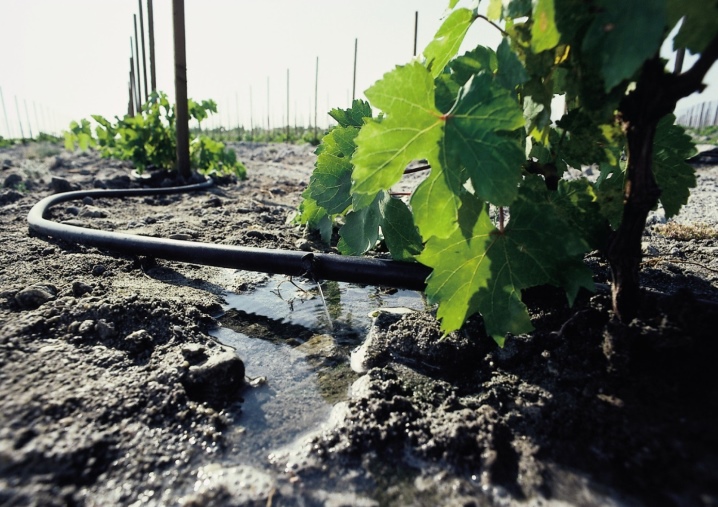
It should be noted that pouring water at the root is not recommended. It would be more correct to dig shallow grooves (0.2 m) half a meter from the grapes. The same technique should be followed for regular watering.
Loosening
The loosening procedure is aimed at letting oxygen to the roots. In the spring, you will need to loosen the soil twice. The first loosening will be deep, and it is carried out immediately after the opening of the grapes, going deep into the ground by 0.25 m. The second is carried out before flowering, and here the depth will be no more than 0.1 m. More frequent procedures are inappropriate.
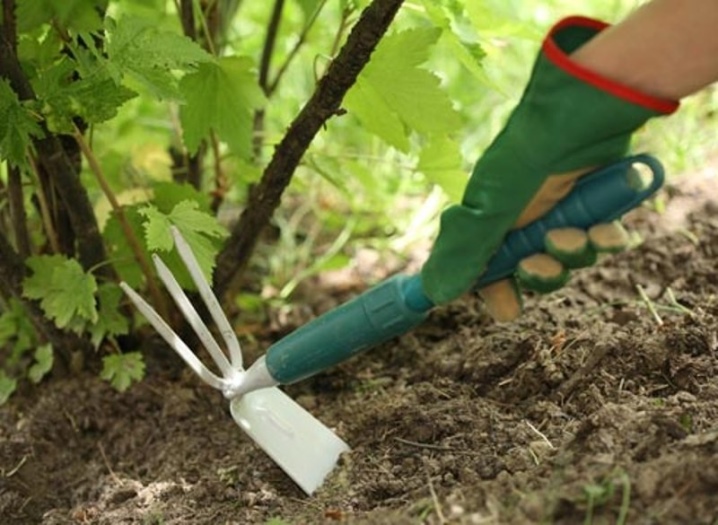
Mulching
Mulch has two important functions at once: it limits the growth of weeds and retains moisture in the soil. Before the procedure, the soil is cleaned, getting rid of weeds, and then watered. Any organic material can be used as the mulch in general. Straw, sawdust, wood chips, pine needles have shown themselves very well. The mulch layer should not be too thick.

Top dressing
In the spring, the grape bushes will need to be fed three times.
- The first feeding is carried out in April. For this, wood ash is used. A glass is taken on a bucket of water. The resulting mixture is applied together with water charging irrigation.
- When the kidneys swell, 15 grams of ammonium nitrate and superphosphate are dissolved in a bucket of water. This top dressing will be root.
- At the beginning of the second decade of May, a bucket of water is mixed with 10 grams of phosphorus and 30 grams of nitrogen (you can take urea) and potassium. The mixture is also shedding soil.
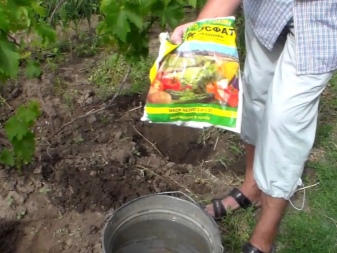
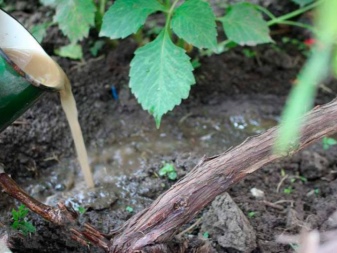
The first or second feeding can also be replaced with organic matter, but this is not done too often. The soil will have to be dug in order for the fertilizers to mix with it. Such dressings can be carried out every few years to increase the fertility of the soil.
Treatment against diseases and pests
To prevent the grape bushes from catching the disease, you need to worry about prevention in advance. It includes several stages.
- For the first time, the grapes are sprayed after the garter.To do this, you need to use vitriol, and you can take both copper and iron. Another solution is Bordeaux mixture.
- The second treatment is carried out at the beginning of the last month of spring. Use the "Horus" remedy, which will protect against fungi. 10 grams of the drug is enough for one hundred square meters.
- The next step is the prevention of ticks. Take the drug "Sunmight", instructions for its use are attached. You need to spray in the early morning.
- 3-4 days before flowering, it is necessary to give preference to such a remedy as "Ridomil Gold". It will protect the grapes from fungi. Invasion of pests can be avoided by processing the bushes with "Decis". To increase resistance to disease, use "Vuksal-kombi B". They are also treated with grapes after the start of flowering.
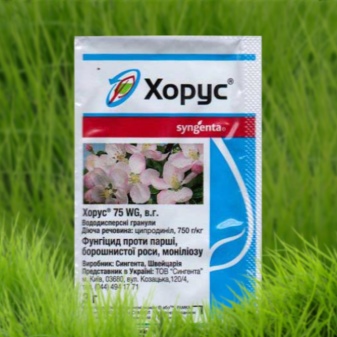
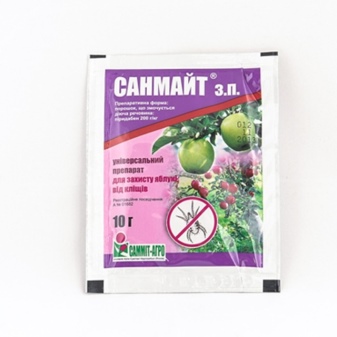
Important: one of the best and relatively safe remedies for almost every culture is "Fitosporin". It can also be used as a prophylaxis or in the treatment of various diseases.
Care rules taking into account the region
In general, the measures for the care of the grapes look standard. But in some regions there are certain peculiarities of cultivation.
- So, in the middle lane, spring comes later than in the south. Therefore, all gardening work in the Moscow region should be started closer to mid-April, or even to its end, depending on the season. After removing the shelter, sanitary pruning is carried out, and after 10 days the culture is fed. The grapes must be tied to a support, and the soil is additionally fertilized with magnesium.
- In the Volga region, it is permissible to remove the shelter only at the very end of April, but it often happens that this is done in early May. At night, the culture is not left without shelter until the air temperature is completely normalized. Spraying is carried out immediately after removing the shelter. Irrigation should be infrequent, but a lot of water will have to be used. During loosening, the soil is fertilized.
- As for Siberia, it is quite difficult to grow grapes here., therefore, it is often cultivated in greenhouses. In the spring, it is very important to feed the plants, while nitrogen is given in minimal quantities. Formative pruning is not carried out in the spring months in Siberia.
- The Urals are milder in climate, but growing here looks difficult. It is necessary to open the grapes in May, when the air temperature reaches at least +13 degrees. It is very important to do everything gradually, as it can still be cold at night. There are pruning in this region, but it is not recommended to cut everything under the root.
- Crimea has a very warm climate, where grapes live the best. They begin to cut it in the last month of winter. It should be borne in mind that the climate of the Crimea can be very dry in early spring. Therefore, watering must be timely.
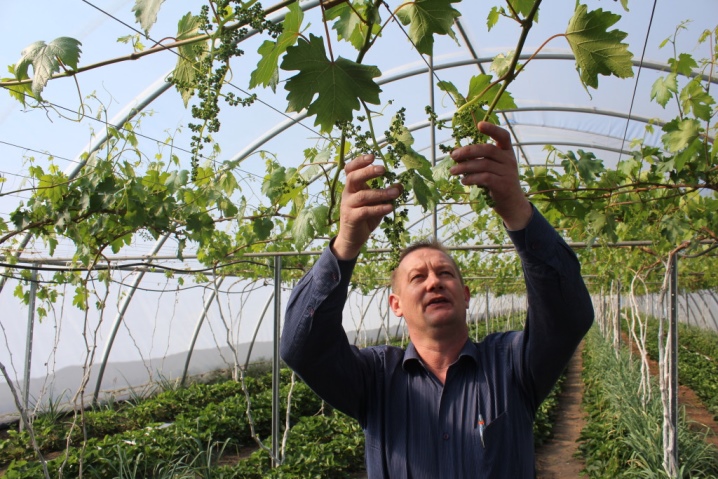
Possible mistakes
Finally, we will consider the typical mistakes of novice gardeners, leading to diseases, insufficient harvest, or the death of grape bushes.
- Incorrect timing for taking cover. If removed too early, return frosts can damage the plants. And if it's late, then the grapes can rot, start budding, which will definitely negatively affect the harvest.
- Lack of the first abundant watering. Without a lot of water, grapes will wake up longer, it will be very difficult for them to grow and give normal fruits.
- Incorrect trimming or lack of trimming. This is one of the worst mistakes. Frozen branches will not be able to bud, this is "waste material". They will only take strength from the bush.
- Ignoring preventive treatments. The plant may not get sick. But if this happens, it will be difficult to cure the disease. Better not to get into trouble at all.
- Choosing the wrong supports and materials. Garter materials must not injure the plant. In addition, you need to take care of the correct type of garter. It depends on the variety of the crop and the strength of its growth.
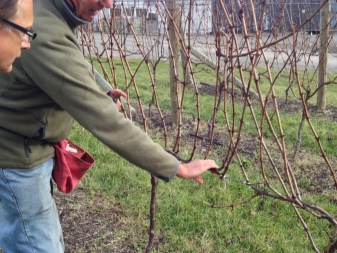
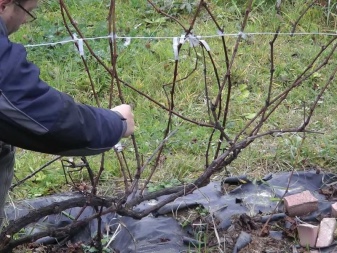













The comment was sent successfully.